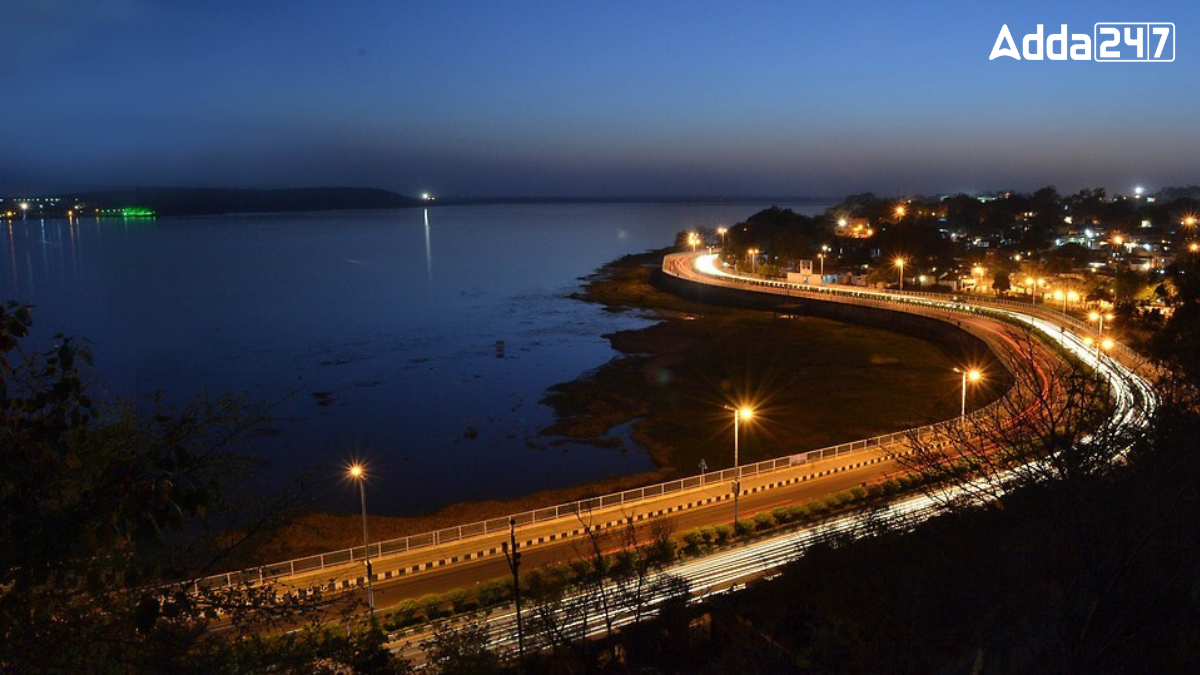Madhya Pradesh, a state in central India, is known for its rich history, culture, and natural beauty. Among its many cities, one stands out as the “Heart of India” due to its central location and historical importance. This city is none other than Bhopal, the capital of Madhya Pradesh.
An Overview of Madhya Pradesh
Madhya Pradesh, meaning ‘Central Province,’ is a state in central India. Its capital is Bhopal, and the largest city is Indore. Other main cities include Jabalpur and Gwalior. It is India’s second-largest state by area and fifth by population, with over 72 million people. Madhya Pradesh shares borders with five neighboring states.
Administrative Divisions of Madhya Pradesh
Madhya Pradesh has 55 districts organized into 10 divisions. By now, it includes 55 district panchayats, 376 tehsils, 313 blocks (janpad panchayats), and 23,043 village panchayats. The state has 18 big city councils (Nagar Nigams), 100 town councils (Nagar Palikas), and 264 smaller town boards (Nagar Panchayats).
Largest and Smallest Districts of Madhya Pradesh
Chhindwara is the largest district in Madhya Pradesh, located in the Satpura Range and covering 11,815 square kilometers (3.85% of the state’s area). It is known for its culture and landscapes. Niwari is the smallest district, spanning only 1,318 square kilometers.
Bhopal, the capital of Madhya Pradesh, is part of the state known as the “Heart of India” due to its central location. The city blends old and modern architecture and is famous for its lakes and historical sites.
Why is Bhopal Known as the Heart of India?
Bhopal is often called the “Heart of India” because of its strategic location at the center of the country. This central position makes it an important place for connecting different parts of India. Bhopal’s location helps in promoting trade, travel, and cultural exchange across various regions of India.
Historical Significance of Bhopal
Bhopal has a long and rich history. The city was founded by King Bhoja in the 11th century, which is why it is sometimes referred to as Bhojpal. Over the years, Bhopal has seen the rule of different dynasties and has been influenced by both Hindu and Mughal cultures. The city is also famous for its royal Nawab era, which left a mark on its architecture and traditions.
Cultural Diversity of Bhopal
Bhopal is known for its unique blend of old and new cultures. On one side, you have the old city area with its traditional bazaars, mosques, and palaces that reflect its rich heritage. On the other side, the new city showcases modern infrastructure, shopping centers, and broad roads. This mix of the traditional and the modern gives Bhopal its unique charm.
Landmarks and Attractions of Bhopal
Bhopal is home to many attractions that showcase its history and beauty:
- Taj-ul-Masajid: One of the largest mosques in India, known for its impressive architecture.
- Bharat Bhavan: A multi-arts complex and museum that promotes Indian culture and art.
- Upper and Lower Lakes: These lakes are a symbol of Bhopal and are popular for boating and picnics.



 Which Country is Known as the Land of Ch...
Which Country is Known as the Land of Ch...
 Which Bird is known as the King of Birds...
Which Bird is known as the King of Birds...
 Which City of Austria is Known as the Ci...
Which City of Austria is Known as the Ci...







